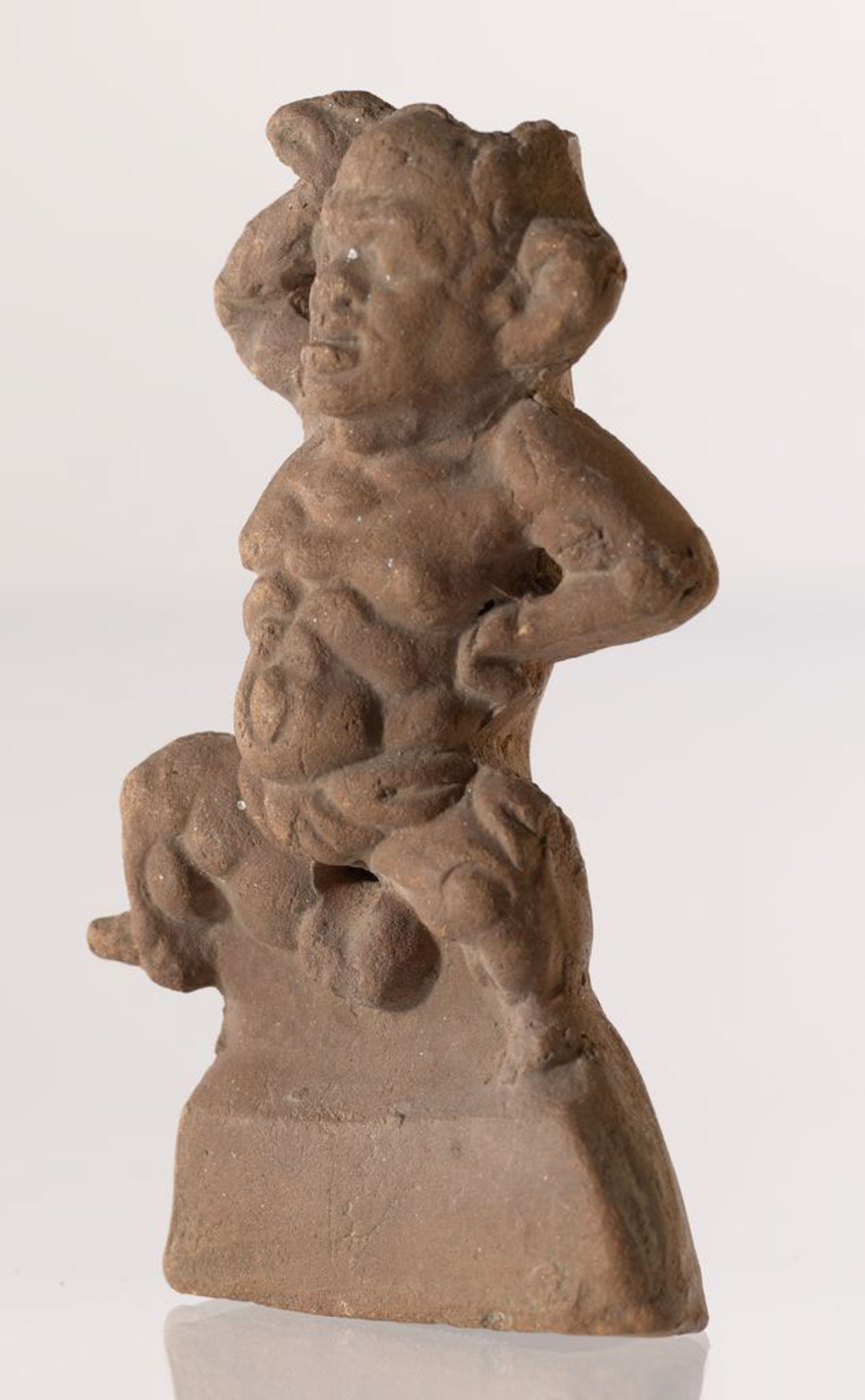Actively hopping from one foot to the other, this figure may accompany his dance with music from krotola, or castanets. The figure has physical features that may indicate dwarfism, including a large head and shortened limbs. Depictions of people with dwarfism, including in terracotta, bronze, and marble, were produced in Egypt during the Hellenistic and Roman periods (particularly from the 3rd century BCE through the 1st century CE). Figures such as this one may represent musicians and dancers in cult contexts, particularly at festivals, or entertainers in general. In some scholarship, these representations are identified as “pygmies,” referring to the mythological people of small stature from Africa. In mythology, pygmies appear in an episode in the life of Herakles as well as in a tale and depictions as fighting with cranes.
This figure is one of eighteen terracotta objects in the Menil Collection that are confirmed as having been part of the collection of Dr. Daniel Marie Fouquet (1850–1914) and appeared in the posthumous catalogue of his terracottas published in 1921 by Paul Perdrizet. This piece is included in the publication only as a comparison for another dancing musician figure. While its specific archaeological provenience is unknown, it is noted as being from the Fayoum (modern-day Al Fayyūm), an oasis in Middle Egypt best known for the preservation of Roman mummy portraits. Dr. Fouquet, himself a medical doctor, was particularly interested in ancient representations of individuals with different pathological conditions, such as dwarfism.

